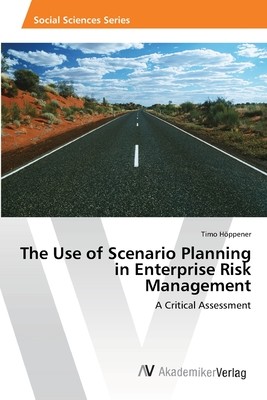
- We will send in 10–14 business days.
- Author: Timo Höppener
- Publisher: AV Akademikerverlag
- Year: 2013
- Pages: 72
- ISBN-10: 3639464575
- ISBN-13: 9783639464573
- Format: 15.2 x 22.9 x 0.4 cm, softcover
- Language: English
- SAVE -10% with code: EXTRA
The Use of Scenario Planning in Enterprise Risk Management (e-book) (used book) | bookbook.eu
Reviews
Description
There has been an increasing need for risk management after the Global Financial Crisis, which resulted in the collapse of large financial institutions, downturns in the stock market and bailouts of banks by national governments. Furthermore, today's environment of uncertainty requires new planning tools. Most organisations plan as if the world is predictable, developing point forecasts, budgets, and initiatives that will succeed as long as the external environment is favourable. In reality, so many variables are in play that linear planning rarely works. Moreover, scenarios allow organisations to consider complex changes and act accordingly. The objective of this study is to explore how and to which extent scenario planning can be used in Enterprise Risk Management (ERM). Moreover, the potentialities as well as the limits of the scenario planning method in ERM will be identified and discussed.
EXTRA 10 % discount with code: EXTRA
The promotion ends in 20d.19:34:39
The discount code is valid when purchasing from 10 €. Discounts do not stack.
- Author: Timo Höppener
- Publisher: AV Akademikerverlag
- Year: 2013
- Pages: 72
- ISBN-10: 3639464575
- ISBN-13: 9783639464573
- Format: 15.2 x 22.9 x 0.4 cm, softcover
- Language: English English
There has been an increasing need for risk management after the Global Financial Crisis, which resulted in the collapse of large financial institutions, downturns in the stock market and bailouts of banks by national governments. Furthermore, today's environment of uncertainty requires new planning tools. Most organisations plan as if the world is predictable, developing point forecasts, budgets, and initiatives that will succeed as long as the external environment is favourable. In reality, so many variables are in play that linear planning rarely works. Moreover, scenarios allow organisations to consider complex changes and act accordingly. The objective of this study is to explore how and to which extent scenario planning can be used in Enterprise Risk Management (ERM). Moreover, the potentialities as well as the limits of the scenario planning method in ERM will be identified and discussed.


Reviews